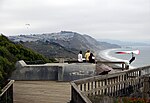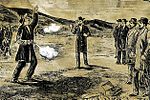1987 U.S. Open (golf)
1987 in American sports1987 in golfGolf in CaliforniaJune 1987 sports events in the United StatesSports competitions in San Francisco ... and 2 more
U.S. Open (golf)Use mdy dates from February 2019
The 1987 U.S. Open was the 87th U.S. Open, held June 18–21 at the Olympic Club in San Francisco, California. Scott Simpson passed and held off 1982 champion Tom Watson on the Lake Course to win his only major title by one stroke. Eleven former champions were in the field and only four made the 36-hole cut. This was the third U.S. Open at the Lake Course of the Olympic Club, the previous two in 1955 and 1966 ended in playoffs. The U.S. Open returned in 1998 and 2012; both were won by one stroke.
Excerpt from the Wikipedia article 1987 U.S. Open (golf) (License: CC BY-SA 3.0, Authors).1987 U.S. Open (golf)
Skyline Boulevard,
Geographical coordinates (GPS) Address Phone number Website Nearby Places Show on map
Geographical coordinates (GPS)
| Latitude | Longitude |
|---|---|
| N 37.709 ° | E -122.495 ° |
Address
Olympic Club Golf Course
Skyline Boulevard
94132
California, United States
Open on Google Maps



